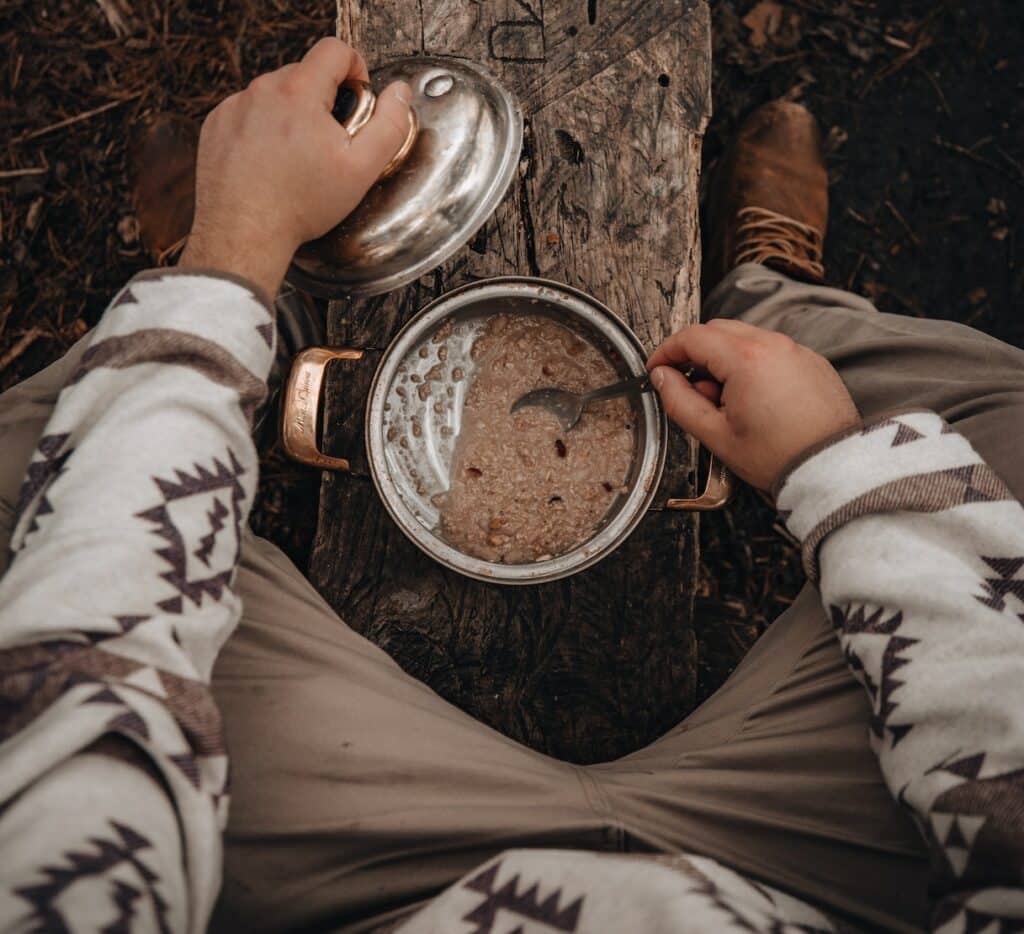Preparing backcountry meals and focusing on trail nutrition is important when planning meals for your next outdoor adventure. Whether you’re organizing a day hike, overnight camping trip, or multi-day backcountry adventure, maintaining good nutrition while exploring the outdoors is key to have a good time on your next adventure.

First on the list? Be sure to start your day off right with a good breakfast. That’s the meal that will set the tone for your day and jumpstart your metabolism. Throughout the day, that morning meal will help you maintain good blood sugar levels and energy.
Planning a Backcountry Menu
Here’s the deal when it comes to planning a backcountry menu: You need to find a balance between getting enough food (calories) to sustain yourself and stay well fed and warm, while not overdoing it and ending up hauling an unnecessary amount of weight on your back.
Depending on the weather, mileage, pack weight, activity, incline of the trail, and other factors, you’ll want to consider your group’s necessary daily calorie intake. Common sense tells us that if you’re planning to be more active than usual, you’ll burn through more calories.
For a multi-day backpacking trip, a good average is 3,500 calories a day per person. A good baseline is a limit of 1.5 pounds to 2.5 pounds of food per person, based on how strenuous you expect your trip to be.
Tips for Trail Nutrition
Consider the type and weight of food when you begin planning meals for your trip. For backpacking, you’ll want to primarily use dry goods and dehydrated products, saving your pack weight for a few fun items, such as a fresh orange or a bell pepper for pizza night.
If you’re car camping or on a paddling trip, you can bring heavier items and even some perishable food since you’re likely to bring along an ice chest.
You’ll also want to include some fruits and vegetables, and the trick here is to be intentional about how much you bring and in what form those foods appear. If you’re on a week-long trip, that fresh apple or orange on Day 2 will taste awesome, but you may want to pack dehydrated fruit/veggies for your meals later in the week.
No matter the type of adventure, you want to ensure your menu has a balance of:
- Carbohydrates / Sugars (quick-acting, short-lasting)
- Protein (medium-acting and lasting energy)
- Fats (slow-acting, long-lasting energy)
Where to Purchase Trail Food
You can find the ingredients for trail menus at your local grocery store or discount store. Focus on lightweight food items, such as rice, pasta, dried soups, etc. You can get almost anything in a dried form at your local stores these days.
While most sporting goods and camping stores sell pre-packaged dehydrated meals, these meals can be pretty costly. They’re certainly fun for a treat, but they don’t enable you to customize your meals. Best bet is to buy most ingredients at the grocery store, then supplement your menu with some pre-packaged meals.
Here is one of our favorite trail menus that offer a good balance of trail nutrition:
Thai Peanut Noodles with Chicken & Veggies
(Servings: 2)
- 2 servings ramen or thin pasta (i.e., angel hair pasta)
- 2 cups water
- 1 pouch chicken
- ¼ cup roasted peanuts
- ½ cup dried mixed vegetables
- 1 chicken bouillon cube
- 2 tablespoon powdered peanut butter
- 1 teaspoon dried cilantro
- 1/4 teaspoon garlic powder
- 1/4 teaspoon ground ginger
- Pinch of ground cayenne pepper (or more if you want it spicier)
TO COOK: Bring water to a boil the water. Mix all dry ingredients together and add to water. Cook 5-10 minutes, until done. Salt & pepper to taste.
Another key to your health and happiness on the trail is to remember good hygiene and food safety while preparing meals in the outdoors. Wash your hands before preparing your food, again while you’re cooking, and before eating. Not washing your hands is just not acceptable. You’ll also want to minimize contact with food. If you’re with a group, think about donning a pair of disposable gloves if you’re touching raw food.
This prevents the spread of bacteria and viruses. Don’t let serving utensils touch personal dishes, and don’t cook if you’re sick — let someone else step in!
TALK TO US
Have any further questions about our courses, what you’ll learn, or what else to expect? Contact us, we’re here to help!
Leave a comment